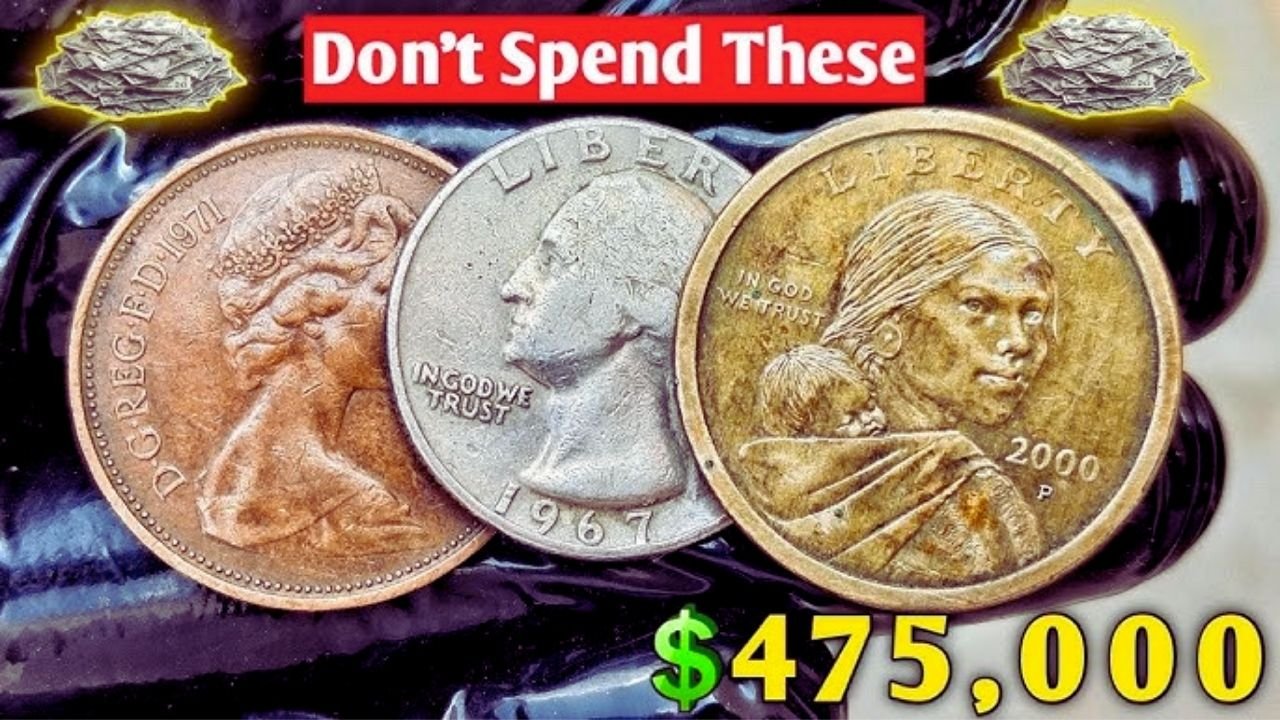Hunt for Hidden Treasures in Your Change
Coin collectors are getting excited about three special coins that might be sitting in your pocket or an old jar at home. The 1971 two pence from the UK, the 2000 one dollar Sacagawea from the US, and the 1967 US quarter could turn out to be worth a lot if they have certain features. With prices going up at auctions, people are checking their loose change more than ever. Experts say these coins show how a small detail can make ordinary money into something valuable. In this piece, we look at each one and why they might make you well off.
The 1971 Two Pence Coin Surprise
The 1971 two pence coin was one of the first after the UK switched to decimal money. It says “new pence” on the back, which was normal back then. But some folks think it’s rare because of how few are in top condition now. Videos on sites like YouTube and TikTok talk about it fetching up to a thousand pounds if it’s shiny and uncirculated. One expert said a perfect one could go for twelve quid, but others list them on eBay for much more. If you find one without scratches, it might be worth getting it checked out.
Details of the 1971 Two Pence
| Feature | Details |
|---|---|
| Year | 1971 |
| Country | UK |
| Material | Bronze |
| Inscription | New Pence |
| Top Value | £1,000 |
The 2000 One Dollar Sacagawea Gem
Over in the US, the 2000 Sacagawea dollar shows a Native American woman with her baby. Most are worth just a dollar, but special ones from a Cheerios box promotion can sell for five to ten thousand dollars. There’s also a rare mistake version called a mule, where the front is from a quarter by error. That one can fetch over a hundred thousand at auction. Collectors love them for the history and the gold look, even though it’s not real gold. If yours came from a cereal box or looks odd, you could be sitting on a fortune.
Details of the 2000 Sacagawea Dollar
| Feature | Details |
|---|---|
| Year | 2000 |
| Country | US |
| Material | Manganese brass clad |
| Variant | Cheerios or Mule error |
| Top Value | $100,000+ |
The 1967 US Quarter Find
The 1967 quarter from America has George Washington on it and no mint mark, as they stopped using them that year. It’s made of copper and nickel, not silver like older ones. But in mint state condition, especially from a special set, it can be worth up to nine thousand dollars. Look for ones with a cameo effect or no wear at all. Some errors like double stamping make them even pricier. People find them in old collections or change, and recent sales show prices climbing.
Which Coin Could Make You Richest
Out of these three, the 2000 Sacagawea mule stands out with values over a hundred grand, making it the top pick for big money. The 1967 quarter comes next at up to nine thousand, while the 1971 two pence might get you a thousand if lucky. All depend on condition and rarity. Coin clubs say to use a magnifying glass to spot details. With more interest online, prices might keep rising, so now’s the time to look.
Tips to Spot Your Own Winner
Start by sorting your coins by year and country. Check for words like “new pence” or special designs. Apps can help identify them quick. Take any suspects to a dealer for a proper look. Keep them in sleeves to avoid damage. Stories of folks finding these in attics keep the buzz going. You never know, your change might hide a gem that changes things.
